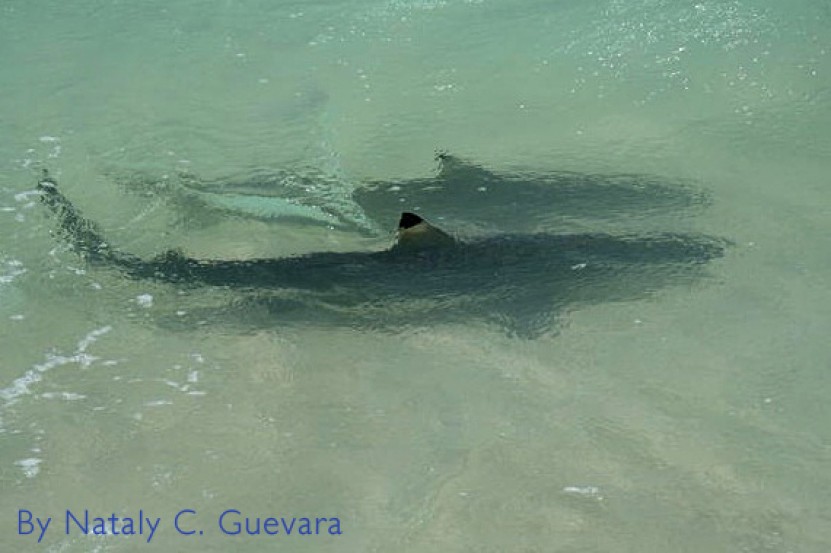A day in the life of a Blacktip shark

Only by knowing the exact fine scale movements of juvenile shark we can create an adequate measure for their protection. Therefore our study undertakes the mayor effort to continuously track the young Blacktips within their nursery area for as long as two days and two nights with no rest, just like the sharks themselves. This species of shark among many others needs to be in constant movement to create a water flow through its gills for respiration.
In November and December research crews of eight members embarked on 3-day-long excursions to our primary study site, Puerto Grande, a mangrove-fringed bay and San Cristóbal’s most important nursery area. The teams consist of local, national and international volunteers, Galapagos National Park rangers and scientists, often supported by the seafaring knowledge of local fishermen.
At the bay, we set up a base camp, from where the crew starts each tracking session. On each trip one young shark, which had been born the same year was tagged with an ultrasonic transmitter and tracked continuously throughout 48 hours.
Even though it is difficult to pinpoint a typical day in the life of a Blacktip, their movement behavior has many common traits. The most important trait for conservation: All neonates and young-of-the-year sharks use the sheltered bay as a nursery ground.
Through the data collection of both trips we reconfirmed the high site fidelity of the shark pups. During the day they prefer the shallow waters of the bay to rest, while the feeding mainly takes place in early morning hours and the late afternoon. Protected by the darkness of the night, the pups explore their environment even leaving their nursery, to penetrate deeper waters or follow the coastline. Yet they always return into the nurseries.
This dependence on their nursery makes the sharks vulnerable to the local fisheries, where they may die when getting trapped in fishing nets, long before they can reproduce and sustain the local population. Therefore, the rendered information and the one from future trips will be essential to narrow down the exact geographic extent of the Blacktip’s preferred habitat so it may be included into the upcoming new zoning scheme of the Galapagos Marine Reserve.



